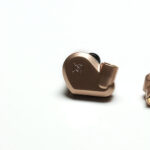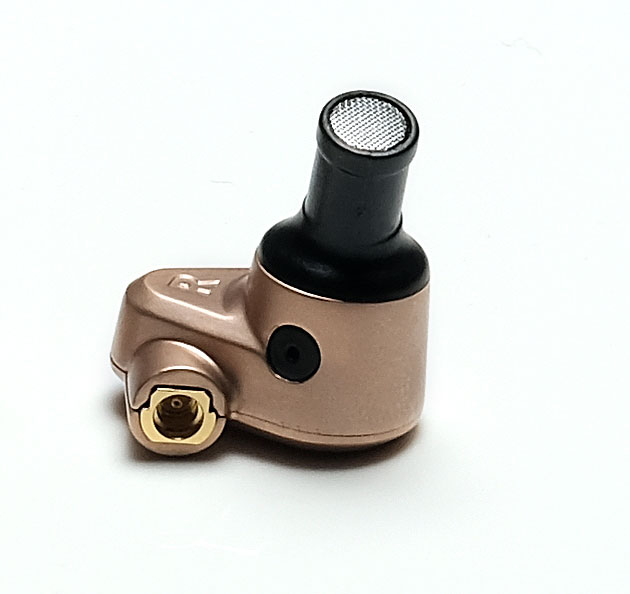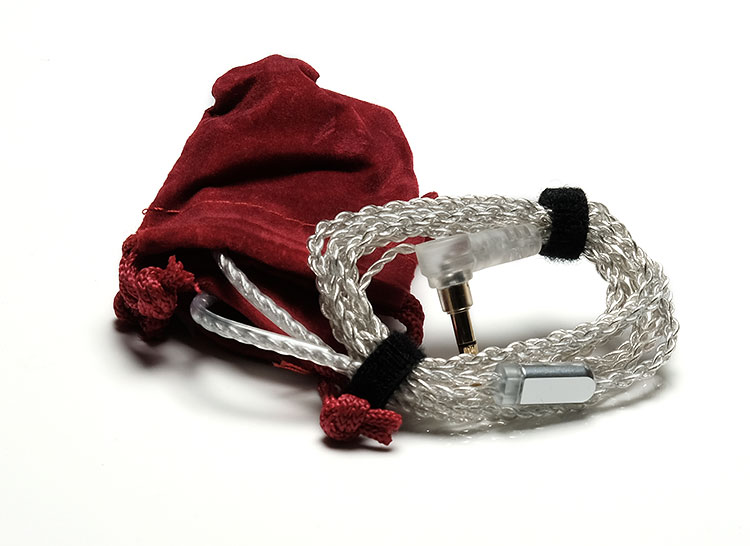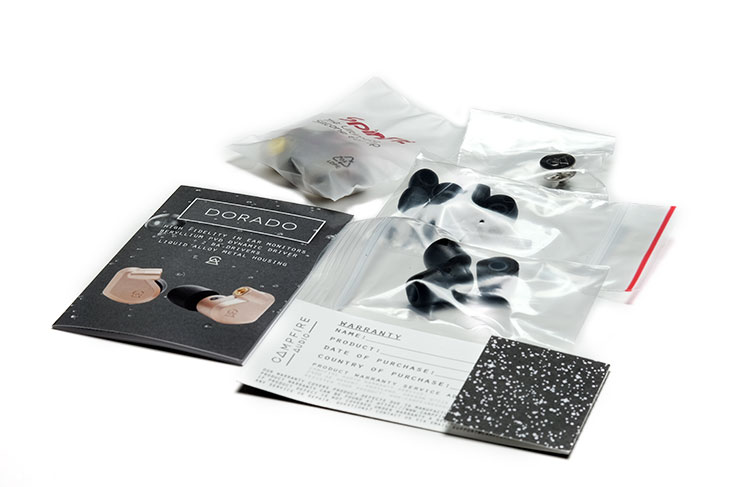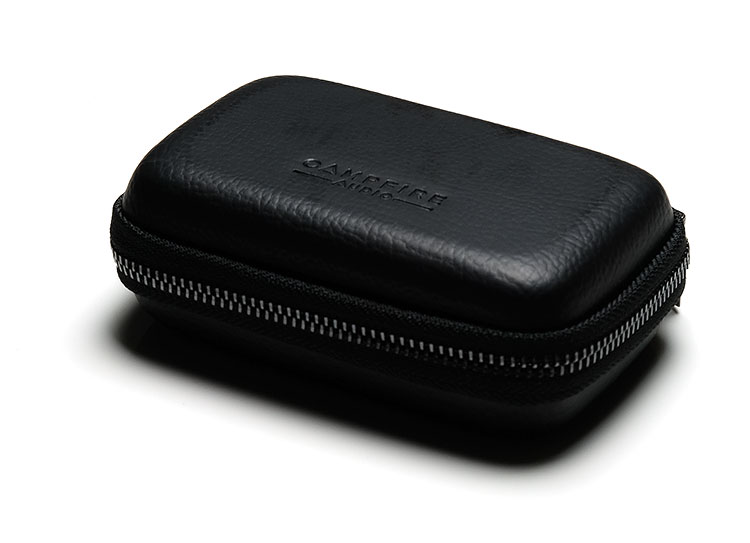The Campfire Audio Dorado is a high-end hybrid universal monitor with a blend of dynamic and balanced armature drivers. It is priced at $999.
Disclaimer: The Campfire Audio Dorado sent to us is a sample in exchange for our honest opinion in this review. We thank the team at Campfire Audio for giving us this opportunity.
To read more about Campfire Audio products we reviewed on Headfonics click here.
Note, this review follows our new scoring guidelines for 2020 which you can read up on here.
Last but by no means least in our series of Campfire Audio new release reviews is the Dorado hybrid IEM.
Launched at the same time as the Vega and the Lyra II and priced at $999, the Dorado represents what I would term as a convergence of Ken’s love of dynamic drivers and the legacy of the excellent BA driver designs from the original lineup that included the Andromeda.
Priced and pitched a little higher than the Lyra series it has nevertheless been somewhat overshadowed by the premium Vega pitch and the endless chatter on its power performance.
That would be a shame because the Dorado could well be the ultimate Campfire Audio “catch-all” IEM or simply the one that people will find the most musical and the most immediate sounding.
Put it this way and in the simplest of terms; if the Vega is the most physical and the Lyra II is the most chilled in presentation, then the Dorado is the most fun-sounding of the new lineup.
What Is The Pitch?
The Dorado is the ‘middle child’ of the second wave of designs from Campfire Audio. All these new designs have a very definite dynamic driver element to their engineering. Both the Lyra II and the Vega are pure DD offerings with unique driver constructs that bucked the previous BA designs in 2015.
The Dorado, on the other hand, takes from both the first-wave BA design elements and the second-wave dynamic design elements to produce Campfire Audio’s first hybrid design IEM.
A Showcase of Ideas
With a merging of drivers, the Dorado is the only IEM in the range that uses pretty much all of the innovative designs CA has achieved over the last few years. In many ways, you could argue that it is a showcase of ideas in one working project.
For instance, on the inside, the single dynamic driver is the same 8.5mm Beryllium PVD Dynamic Driver that you will find in the Lyra II and the dual BA implementation is with the same Tuned Acoustic Expansion Chamber™ (TAEC) technology that you will find in the Andromeda and Jupiter.
On the outside, you have the same cool black carry case with those little red protector pouches, a similar branded retail box, the improved Litz cable, and of course that yummy PVD finish on the new liquid metal alloy housing though this time in a color CA call “Sunrise”.
Intent
The intent of the above it to pitch the Dorado as having an excellent dynamic driver capability for a natural and impactful low end whilst at the same time offering the speed, sparkle, and detail of a BA design for the highs that can go beyond regular BA designs using the TAEC technology found in their flagship Andromeda.
CA has inferred the signature as fun sounding and musical which should appeal to a lot of audiophiles who simply want to “let go”.
Design
As it was with the Vega and the Lyra II, the Dorado housing is also made of a liquid metal alloy with PVD coating that is very robust and well-finished. It consists of two sections; the main body and the faceplate and both are joined together with only the tiniest of seal lines visible which is excellent assembly craftsmanship.
PVD is also a more durable finish when it comes to the odd knocks and bumps than the older ceramic design so it is unlikely you will see much in the way of chips and paint scraping off in regular use.
Interrupting the otherwise monotone “Sunrise” colored shell is a small circular black bass port for the dynamic driver to breathe. You will find this bass port is in the same place as the Vega and Lyra II which is just below the base of the cable MMCX stem.
Beryllium Copper
The front of the Dorado has the same quality of finish as the Vega and Lyra MK2. The ‘Sunrise” colored faceplate has a very clean engraved CA logo on the base and terminated at the top with CA’s custom Beryllium Copper MMCX connectors.
Having used these connectors quite extensively with both the original Tinsel and the newer Litz cable I can testify these are pretty durable connectors and over the 18 months, I have not noticed any degradation loss of signal, or loosening of the connection strength.
These mating pins are built to last and are much superior to typical softer brass connectors.
Drivers
Inside the Dorado, there is a single 8.5mm Beryllium PVD Dynamic Driver and 2 High-Frequency BA Drivers. The 8.5mm DD is the same driver used by the Lyra MK1 and MK2 coupled with neodymium magnets pushing the voice coils at the heart of the driver.
The dual BA design I presume similar to the sets used in Andromeda and Jupiter filtered for a similar high-end frequency response and is housed in the same 3D printed Tuned Acoustic Expansion Chamber™ (TAEC) technology that made the treble extension so spectacular on their high-end BA models such as the Andromeda.
Cable
The Dorado also comes with the 1.35m SPC Litz cable as standard which is superior to the older Tinsel cable that was bundled with the original series of IEM releases from the Jupiter down.
The SPC Litz is terminated with the same 3.5mm right angle clear plastic jack and finished with a very classy matching y-split silver metal tube and clear plastic chin strap.
I can’t overstate enough how much better this cable is, both in terms of audible improvements in the bass response as well as its easy manipulation, over-the-ear memory hook comfort, and low microphonics. It is an excellent cable bested only by the Reference 8 they sell for their IEM range as an optional extra.
Fit & Seal
One major difference between say the Vega and the Dorado is the length of the stem with the Dorado having a nozzle about twice the length of the Vega. That will place a little more emphasis on the tips doing the sealing work as the driver housing will be slightly further out, especially for short or thin ear canals.
Tips
Tips selection with the Dorado is consistent with the tip selection from the Vega and Lyra II with some excellent choices including foams, silicone single bore, and SpinFits. You will get some audible changes with the various tips with SpinFits taking a shade of the bass impact and foams adding a bit more.
Seal
The seal is very good indeed and enhanced somewhat with the use of foam tips over the other tip types included. They fit right in the first time with the medium foam tips, offer an excellent seal, great comfort, and zero accidental movements either in an open or closed jaw stance.
If you have tried the Vega and Lyra II, you will get no surprises with the Dorado as they all follow the same form and function and I judge them marginally more comfortable to use than the BA lineup with its larger angular cut and heavy shell.
Accessories & Packaging
The Dorado harmonizes with the Lyra II and Vega in terms of packaging and accessories. In fact, you could swap them all around and it wouldn’t make a difference apart from the label on the box.
The box is unchanged in color from the Vega and Lyra II, being red and black with only the Dorado decal to distinguish the difference. As before it would have been nice for a different color scheme for the three IEMs just to give them a more distinct appeal on the retail shelf much as what we had with the first line-up releases, the Jupiter, Orion, Nova, and Lyra MK1.
Tip and accessory selection include:
- 4 pairs of SpinFit silicone ear tips
- 3 pairs of silicone ear tips
- 2 pairs of foam ear tips
- Detachable cable
- Zippered carrying case
- Cleaning tool
- Campfire Audio pin
- User guide
The leather case is also the same black grungy type zipper and fur-lined carry case as the Vega and Lyra k2. It is the same excellent quality as always and great at protecting your IEM with enough room for a spare cable or set of tips.
I can’t complain, they look great, love the fur lining, and finish on the outside, and are superior in looks and feel to the original Lyra MK1 case.
Much like the packaging though I would have liked to have seen a different color used for the Dorado case. If like me, you have to have all 3, (Lyra II, Dorado, Vega), it can be a bit of a challenge picking out which from which judged on the cases.
The marketing challenge is there also in terms of the whole package. For the Lyra MK2, it is a step up on the old series Lyra MK1. As for the Dorado, I am on the fence, I think there should be something more in the package to mark it out as higher priced than the Lyra II but at the same time, it still looks acceptable.
Sound Impressions
Summary
The Dorado is a highly musical presentation, though I do not think CA will apologize for that because none of their IEMs are voiced for analytical accuracy. I always feel CA IEMs are tuned for emotional connection rather than neutral reproduction and the Dorado is no different in that respect.
All 3 IEMs, the Dorado, Vega, and Lyra II actually follow a similar curve pattern, and where they differ is more in terms of degrees of emphasis at certain frequency points and a more nuanced tuning in the treble performance of each.
The Dorado, much like the Vega and to a slightly lesser extent the Lyra II has a U-shaped presentation. Given the way the midrange is tuned on the Dorado though some might classify it as v or w-shaped.
Where it differs the most from the Vega and Lyra is the boosting of the low end which is lower than the Vega (by around 5dB) but higher than the Lyra (+/- 5dB also) providing a much bigger impact than the MK2 but less physicality and definition than the Vega.
There are also some differences to the other two IEMs in the vocal staging with the Dorado offering a little more emphasis due to a bigger dip in the lower mids marking out a cleaner separation from the power of the single DD in the Dorado to the detail of the BA’s dealing with the upper-frequency performance.
As such, the presentation will be a lot more vocal and bass-focused than the Vega or Lyra, pushing back the instrumental presence to slightly behind however layering and separation are still excellent and well-defined.
Overall this is a fun and engaging presentation with a slightly less aggressive and more forgiving signature than the Vega but delivering a more impactful and dynamic response than the relaxed-sounding Lyra II.
Bass
The Dorado uses the same 8.5mm beryllium driver as the Lyra II for its low-end but boosted by around 4-5dB more than the Lyra. This driver has a warm sheen to its response and a slightly softer signature than the diamond driver of the Vega which in turn is weighted about 2dB higher than the Dorado and a little harder hitting.
The boosting provides for a more substantial impact and weight in the Dorado’s low end but it still retains that warmer sheen so it’s not as clean-cut or as aggressive sounding as the Vega’s physical delivery but it is still meaty and very satisfying.
Much like the Vega though the Dorado bass emphasis starts low, around the 50-100Hz marker. However, unlike the Vega, the Dorado actually holds its emphasis a little longer and further into the mid-bass (200Hz).
The Vega drops down in a more linear fashion and at the same point does not sound quite as boosted. The Vega thus has a bit more sub-bass bias and power compared to the Dorado which has an impactful but slightly softer and warmer tone to it.
Beyond 300Hz and into the lower-mid to midrange, the Dorado is scooped out a little more forcefully than either the Vega or the Lyra II creating a clear sense of separation between its bass response and mid-range performance and ensuring low-end instrumental signatures do not get veiled over or lose clarity.
Mids
Mids on the Dorado are tuned for vocal emphasis placing the majority of instrumentation just slightly behind staging-wise.
Up to 1k, the emphasis is on a slightly dipped lower midrange so instrumental work is clean and clear avoiding bleed from the enhanced low end and preventing instrumental work from sounding honky or nasal. This also leaves enough room for a slightly enhanced vocal presence to take front and center from 1-3k.
The lower mid dip thankfully means that elevation is not overly worked and competing too much with higher-pitched lead guitar work giving you a smooth delivery that is more intimate than say the Vega but not overly congested.
It does mean though that whilst I prefer the Dorado for its vocal performance, instrumental work is a touch thinner sounding in its timbre than the rich tone you get with the Lyra II and not quite as impactful as the Vega.
There is a secondary minor boost around 4k with dips on either side on 3k and 5k but it’s nothing major. The net effect is a little bit of percussive sparkle and definition but nothing overly boosted so it doesn’t distract or sound irritating. It also serves to keep higher midrange energy just a touch behind vocal performance so the two are not competing unnecessarily.
Treble
Though not as laid back as the Lyra II it is not as forward sounding as the Vega treble, particularly the presence region and lower brilliance range up to around 8k which displays a more prominent level of sparkle.
The excellent TAEC system though does its job here very well indeed with the Dorado’s top-end performance sounding very detailed. Despite the energy up to 8k the Dorado actually sounds very articulate and smooth and in no way peaky or tizzy.
It also does not sound rolled off with excellent extension and refuses to drop off as quickly as the Lyra MK2 post 10k to add some welcome spaciousness and air in its delivery.
You won’t get the clean sound of the Vega, it is slightly softer and with a quicker decay in delivery for me but it will be more forgiving whereas the Vega can sometimes show up any sibilance in badly recorded material.
It is a very likable almost ethereal quality and reminiscent of how the Andromeda deals with treble though not as far extended but still very suitable for a lot of ‘shimmering’ EDM genres.
Click on Page 2 below for Comparisons & Matchability


